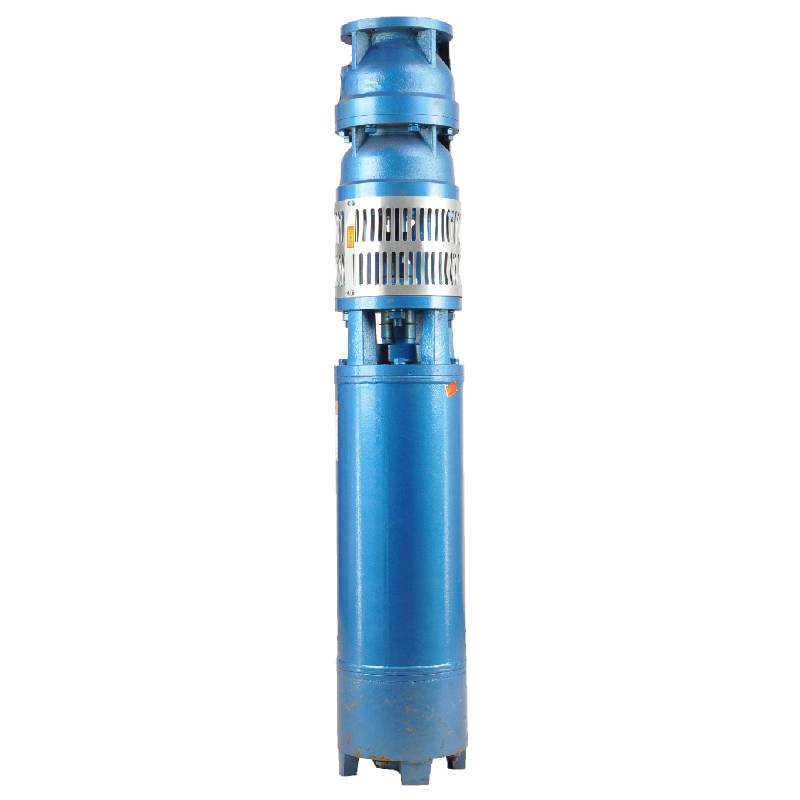Nov . 07, 2024 16:44 Back to list
Comparison of Deep Well Pumps and Submersible Pumps for Water Extraction
The Difference Between Deep Well Pumps and Submersible Pumps
Deep well pumps and submersible pumps are two distinct types of water pumping systems commonly used in various applications, including agricultural, residential, and industrial purposes. Understanding the differences between these two types of pumps is crucial for selecting the right equipment for specific needs.
Basic Definitions
Deep well pumps are surface-mounted pumps that are commonly used when water needs to be drawn from deep underground sources. These pumps work by creating a vacuum that pulls water up through a series of pipes. They are typically installed above ground and can often be seen with long shafts extending deep into the well, where the pump operates frequently.
On the other hand, submersible pumps are designed to be submerged underwater. They operate while completely submerged in the water they are pumping, which means they are usually placed deep within the well itself. Submersible pumps are encased in waterproof housings that prevent any water from entering the electrical components, allowing the pump to function while submerged.
Design and Structure
The design differences between deep well pumps and submersible pumps are significant. Deep well pumps generally have a simple design that consists of a motor and a long shaft extending into the well. The motor is usually located above the ground, allowing for easier maintenance and repair. However, this design means that the pump must be much more powerful to lift the water from great depths, often causing greater wear and tear.
Conversely, submersible pumps are designed to handle the hydraulic load and pressure inherent in pumping water from deep underground. Their compact design incorporates both the motor and the pump stages within a single unit, making them less susceptible to wear since they do not have to work against the atmospheric pressure while lifting water. This design also allows submersible pumps to function more efficiently because they are already positioned in the fluid they are meant to pump.
difference between deep well pump and submersible pump

Efficiency and Performance
One of the most significant differences between deep well pumps and submersible pumps is their efficiency. Submersible pumps are generally more efficient because they do not have to overcome the atmospheric pressure inherent in lifting water from deep wells. This efficiency translates to lower energy costs and less strain on equipment over time.
On the other hand, deep well pumps may utilize more energy due to their design and operation. As these pumps work to create a vacuum, they may also risk cavitation, a phenomenon that can damage the pump and decrease its lifespan. Meanwhile, submersible pumps, being submerged, are less likely to encounter cavitation and can operate smoothly even under high-pressure conditions.
Applications
When deciding which pump to use, it's essential to consider their respective applications. Deep well pumps are often preferred in situations where the water source is shallow or when water needs to be drawn from an aquifer that is not excessively deep. They are commonly used in agricultural irrigation systems and can be more readily maintained due to their above-ground installation.
Submersible pumps, on the other hand, are often the go-to solution for deeper wells and applications requiring continuous water supply, such as municipal water systems, drainage, and sewage systems. Their ability to operate underwater makes them ideal for well depths beyond the reach of standard deep well pumps.
Conclusion
In conclusion, while both deep well pumps and submersible pumps serve the primary purpose of moving water from underground sources, they differ significantly in their design, efficiency, and application. Deep well pumps are great for shallower sources and offer easier maintenance, while submersible pumps excel in deeper applications and efficiency. When selecting a pumping system, it's essential to consider the specific requirements of the application, the depth of the well, and the overall operational efficiency to make the best choice for your needs. Understanding these differences will ultimately lead to more effective and cost-efficient water management.
-
Submersible Water Pump: The Efficient 'Power Pioneer' of the Underwater World
NewsJul.01,2025
-
Submersible Pond Pump: The Hidden Guardian of Water Landscape Ecology
NewsJul.01,2025
-
Stainless Well Pump: A Reliable and Durable Pumping Main Force
NewsJul.01,2025
-
Stainless Steel Submersible Pump: An Efficient and Versatile Tool for Underwater Operations
NewsJul.01,2025
-
Deep Well Submersible Pump: An Efficient 'Sucker' of Groundwater Sources
NewsJul.01,2025
-
Deep Water Well Pump: An Efficient 'Sucker' of Groundwater Sources
NewsJul.01,2025
-
 Submersible Water Pump: The Efficient 'Power Pioneer' of the Underwater WorldIn the field of hydraulic equipment, the Submersible Water Pump has become the core equipment for underwater operations and water resource transportation due to its unique design and excellent performance.Detail
Submersible Water Pump: The Efficient 'Power Pioneer' of the Underwater WorldIn the field of hydraulic equipment, the Submersible Water Pump has become the core equipment for underwater operations and water resource transportation due to its unique design and excellent performance.Detail -
 Submersible Pond Pump: The Hidden Guardian of Water Landscape EcologyIn courtyard landscapes, ecological ponds, and even small-scale water conservancy projects, there is a silent yet indispensable equipment - the Submersible Pond Pump.Detail
Submersible Pond Pump: The Hidden Guardian of Water Landscape EcologyIn courtyard landscapes, ecological ponds, and even small-scale water conservancy projects, there is a silent yet indispensable equipment - the Submersible Pond Pump.Detail -
 Stainless Well Pump: A Reliable and Durable Pumping Main ForceIn the field of water resource transportation, Stainless Well Pump has become the core equipment for various pumping scenarios with its excellent performance and reliable quality.Detail
Stainless Well Pump: A Reliable and Durable Pumping Main ForceIn the field of water resource transportation, Stainless Well Pump has become the core equipment for various pumping scenarios with its excellent performance and reliable quality.Detail
